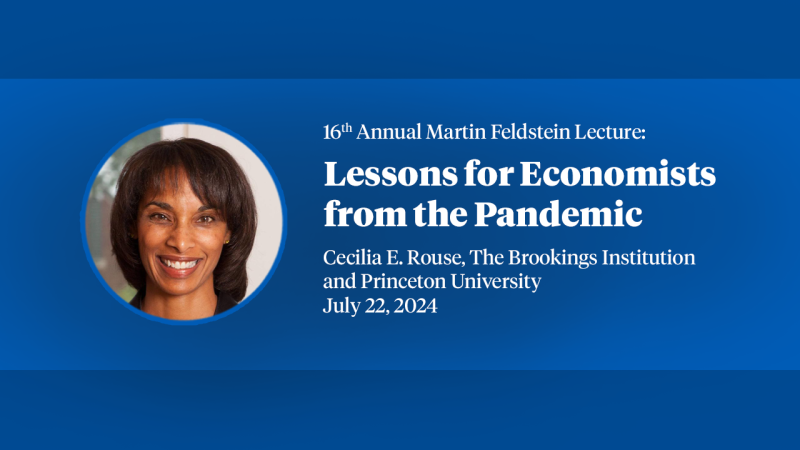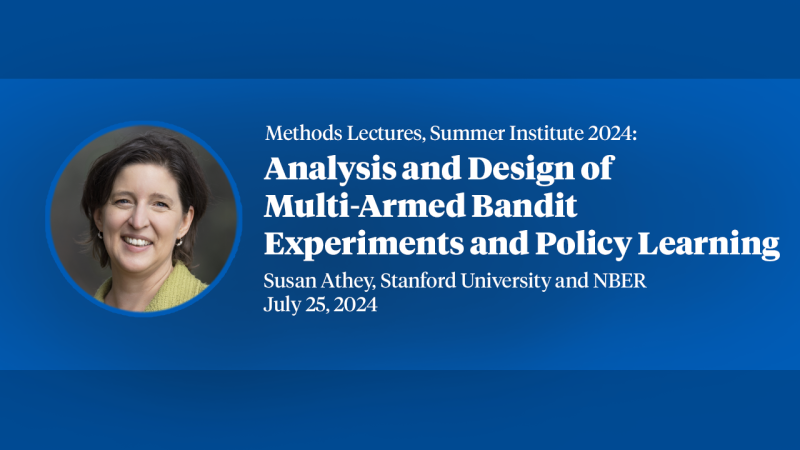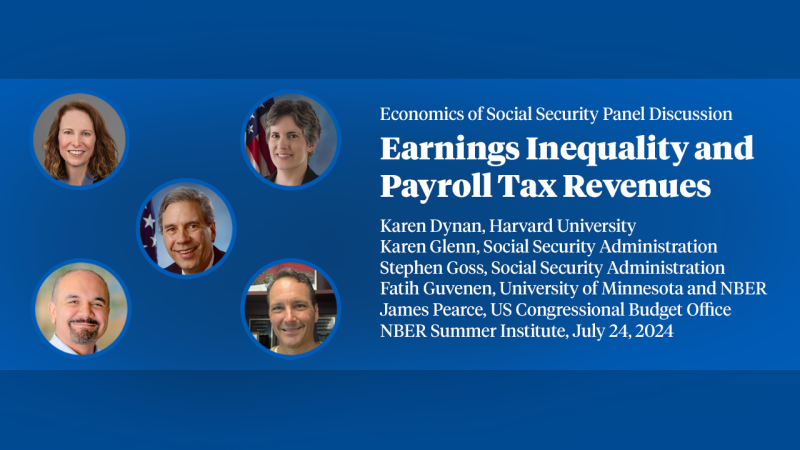Welfare Reform, Health Insurance and Health
In 1996, Congress passed and the President signed the Personal Responsibility and Work Opportunity Reconciliation Act (PRWORA), or what has become known as welfare reform. To many, welfare reform has been an unqualified success; welfare rolls decreased markedly and single mothers began working in unprecedented numbers.1 Moreover, poverty rates among single mothers have decreased sharply.2 Welfare reform may have had some unintended consequences, though, particularly the loss of health insurance. However, contrary to some earlier studies3, my research finds that welfare reform was responsible for only a small increase, less than 4 percent, in the proportion of less-educated, unmarried mothers and their children without health insurance. And, consistent with these small effects on insurance, I find that changes in the welfare caseload attributable to welfare reform were associated with few adverse health effects among less-educated, unmarried mothers. Indeed, changes in the welfare caseload were associated with some significant improvements in healthy lifestyles among this group. Decreases in the welfare caseload between January 1996 and June 2000 were associated with a 30 percent decrease in the probability of binge drinking in the past month, and a 27 percent increase in the probability of engaging in regular and sustained physical activity.
The potential loss of health insurance was an important concern of Congress during the debate leading to passage of PRWORA. In fact, PRWORA contains provisions "assuring Medicaid coverage for low-income families," which provides -- among other things -- transitional Medicaid benefits for those who leave welfare. If welfare reform led to loss of health insurance coverage, as has been claimed, it might have adversely affected the health of persons in these families. Furthermore, welfare reform could have affected women's health in ways other than through changes in insurance coverage. Between 1994 and 2000, approximately one-fifth of all low-educated, single mothers made the transition from welfare-to-work. The switch from subsidized household work to paid employment could affect financial resources, time constraints, and the amount and kind of physical activity, all of which may affect women's health and health behaviors. On the other hand, employment may result in improved feelings of self worth, increased earnings, and greater access to quality health care through employer-sponsored insurance, and these changes may improve women's health.
Surprisingly, there has been relatively little study of the effect of welfare reform on health insurance coverage and health, even though health is an essential component of wellbeing and arguably is as important as material wellbeing, which has been a widely studied outcome of welfare reform. Here I report on some recent research related to these issues.
Welfare Reform and Health Insurance
It is widely believed that an unintended consequence of welfare reform was the loss of health insurance coverage among low-income families. This belief is based on several pieces of information: studies of welfare "leavers" find that a substantial proportion of former welfare recipients are uninsured in the year after leaving welfare;3 studies of the effect of welfare reform on Medicaid enrollment find a significant decline in Medicaid enrollment among low-income women and children after the implementation of welfare reform;4 and there is evidence that administrative hurdles limit enrollment in Medicaid for low-income families not receiving public assistance.5
However, none of this evidence is definitive. Consider the "leaver" studies, for example. These studies cannot differentiate between women and children who left public assistance because of welfare reform, and those who left voluntarily - that is, those who would have left public assistance even in the absence of reform. The evidence suggests that between one-tenth and one-third of the decline in welfare caseloads is a result of welfare reform.6 Thus, only a portion of the families in "leaver" studies can provide information about the effect of welfare reform on health insurance status. Since the motivation for leaving welfare differs between the two groups -- one was induced to leave by legislation and the other left voluntarily -- the consequences of leaving also may be very different. In addition, leaver studies fail to consider the experiences of those who were diverted from welfare because of changes in policy.
To investigate the effect of welfare reform on health insurance coverage, Neeraj Kaushal and I examine the relationship between changes in the welfare caseload and state and federal welfare policy, and changes in health insurance coverage of single mothers and their children.7 Estimates from our analysis suggest that the 42 percent decrease in the caseload between 1996 and 1999 was associated with the following changes in the insurance status of low-educated single mothers: a decrease in Medicaid participation of between 7 and 9 percent; an increase in employer-sponsored insurance coverage of 6 percent; and an increase in the proportion uninsured of between 2 and 9 percent. For children of these mothers, the decline in the welfare caseload between 1996 and 1999 was associated with: a decrease in Medicaid participation of between 3 and 5 percent; an increase in private insurance coverage of between zero and 9 percent; and an increase in the proportion uninsured of between 6 and 11 percent.
We also estimate the effect of changes in the caseload attributable to state and federal welfare reform policy on the health insurance status of low-income families. These estimates suggest, albeit with some qualification, that decreases in the caseload caused by government policy had less adverse effects on health insurance coverage than did decreases in the caseload caused by other factors. So at most, welfare reform was responsible for a 3 to 4 percent increase in the proportion of low-income women and children without health insurance.
What are the implications of these findings? Mostly, the smaller adverse consequences that we find weaken the argument that safeguards in PRWORA to protect health insurance coverage of former welfare recipients were insufficient. Similarly, the results of this study weaken the arguments that cite the loss of health insurance as a consequence of welfare reform, justifying further expansion of Medicaid and the State Children's Health Insurance Program (SCHIP) to adults. The smaller effects that we find suggest that many women who were deterred from entering or who left welfare remained insured, particularly those induced to leave welfare because of government policies, either by using their transitional Medicaid benefits, or by obtaining employer-sponsored insurance.
Kaushal and I also study the effect of welfare reform on the health insurance coverage of low-income immigrant families.8 The Personal Responsibility and Work Opportunity Reconciliation Act (PRWORA) changed legal immigrants' access to public health insurance in two ways: directly, by denying Medicaid benefits to immigrants who arrived in the United States after August 1996; and indirectly, by denying or limiting immigrant participation in Temporary Aid to Needy Families (TANF), which is an important entry point into Medicaid.
For this group of low-income families, federal welfare reform is associated with an increase of between 17 and 27 percent in the proportion of low-educated, foreign-born single women who are uninsured. The larger effect of PRWORA on immigrants than natives is consistent with the "chilling" hypothesis: this suggests that the controversy surrounding the law had as much impact as the law itself, because for a majority of immigrant women, the immigrant provisions of PRWORA were not binding -- they had arrived before 1996. Therefore, these women faced the same policy changes as U.S.-born women did. The study also suggests that, although policies under PRWORA were more restrictive towards new immigrants, the health insurance coverage of new immigrants relative to immigrants who arrived earlier was not differentially affected by PRWORA. This is also consistent with the "chilling" hypothesis. Finally, our analysis shows that among the post-1996 immigrants, the insurance coverage of single women living in states that provide both TANF and Medicaid benefits seems to have been as adversely affected as the insurance coverage of women living in states that provide for neither or just one of the programs. This is the most direct evidence that supports the "chilling" hypothesis.
Our analysis of immigrant children suggests that PRWORA adversely affected their health insurance coverage. We find that welfare reform is associated with a 150 percent increase in the proportion uninsured among this group. PRWORA also adversely affected the health insurance coverage of U.S.-born children living with foreign-born mothers. In contrast, welfare reform had no statistically significant effect on the health insurance of the children of U.S.-born single mothers. Again, this is an indication that PRWORA may have engendered fear among immigrants and dampened their enrollment in safety net programs, because PRWORA did not differentiate between U.S.-born children of foreign-born parents and U.S.-born children of U.S.-born parents.
Welfare Reform and Health
I have studied the effect of welfare reform on health in two recent papers. Won Chan Lee and I examine the relationship between changes in the welfare caseload and welfare policy, and changes in prenatal care use and birth weight.9 Our hypothesis is straightforward: welfare reform may have resulted in a loss of health insurance among pregnant women that could adversely affect their access to, and use of, prenatal care services, which in turn may have adversely affected infant health, as measured by birth weight. Our findings indicate that welfare reform had relatively small effects on the prenatal care use and infant health of less-educated, unmarried women. Among unmarried mothers with less than 12 years of education, the decrease in the welfare caseload during the late 1990s was associated with a 2 percent decrease in first trimester care; a 10 percent increase in last trimester care; a 1 percent decrease in the number of prenatal care visits; and virtually no change in birth weight. These estimates of the effect of the welfare caseload represent upper bound estimates of the effect of welfare reform since welfare reform was responsible for only part of the decrease in the caseload. Among unmarried women with 12 years of education, estimates indicate similarly small effects. In this case, there is little evidence that welfare reform affected prenatal care and the decrease in the caseload was associated with a 1 percent decrease in birth weight and a 6 percent increase in low birth weight. These relatively small effects are consistent with the findings from my other work that welfare reform did not significantly affect the number of low-educated, unmarried mothers without health insurance.
Elizabeth Tarlov and I study the effect of welfare reform on health behaviors and health.10 We identify three pathways, which we refer to as employment stress, organizational stress, and financial stress, by which changes in the welfare caseload and welfare reform may affect the health and health behaviors of low-educated, single mothers. In sum, not being on welfare entails significant changes in women's daily activities, working conditions, responsibilities, and financial circumstances, and these changes may affect their health and health behaviors. The results of our study reveal that changes in the caseload had little effect on self-reported measures of physical and mental health, but were significantly associated with two health behaviors: binge drinking and regular exercise. Decreases in the welfare caseload between January 1996 and June 2000 were associated with a 27 percent decrease in the probability of binge drinking in the past month among low-educated single mothers. Moreover, estimates suggest that the association between changes in the welfare caseload and binge drinking did not differ by the underlying cause of the caseload change. Changes attributable to policy had similar effects as changes attributable to other factors, such as the economy. Changes in the welfare caseload also were significantly associated with the probability of engaging in regular and sustained physical activity; decreases in the caseload were associated with a 27 percent increase in regular and sustained physical activity. In this case, there was some evidence that changes in the caseload attributable to policy had larger effects than changes in the caseload attributable to other reasons.
Overall, our results suggest that the recent declines in the caseload have led to healthier lifestyles among less-educated, single mothers. Decreases in the caseload are associated with less binge drinking and more exercise. Notably, the improvements in lifestyle associated with the decrease in the welfare caseload were not caused by higher employment. This suggests that women who left welfare experienced lifestyle improvements for reasons other than employment.
1 R. Lerman, "Less Educated Single Mothers Achieved High Wage and Employment Gains in the mid 1990s," Single Parents' Earnings Monitor, October 26, 2001, Urban Institute.
3 J. Guyer, Health Care After Welfare: An Update of the Findings from State-Level Leaver Studies, Washington, DC: Center on Budget and Policy Priorities, 2000.
4 K. Kronebusch, "Medicaid for Children: Federal Mandates, Welfare Reform, and Policy Backsliding," Health Affairs, 20 (2001) pp. 97-111.
5 M. Ellwood, "The Medicaid Eligibility Maze: Coverage Expands but Enrollment Problems Persist," in Assessing the New Federalism, Occasional Paper No. 30, (Washington, DC: Urban Institute, 1999).
6 R. Blank, "Evaluating Welfare Reform in the United States," Journal of Economic Literature, 40 (4) (2002) pp. 1-43.
7 R. Kaestner and N. Kaushal, "The Effect of Welfare Reform on Health Insurance Coverage of Low-income Women and Children," forthcoming in Journal of Health Economics, 2004.
8 N. Kaushal and R. Kaestner, "Welfare Reform and Health Insurance of Immigrants," unpublished manuscript, University of Illinois at Chicago, 2003.
9 R. Kaestner and W. Lee, "The Effect of Welfare Reform on Prenatal Care and Birth Weight," NBER Working Paper 9769, June 2003.
10 R. Kaestner and E. Tarlov, "Changes in the Welfare Caseload and the Health of Low-educated Mothers," NBER Working Paper No. 10034, October 2003.


